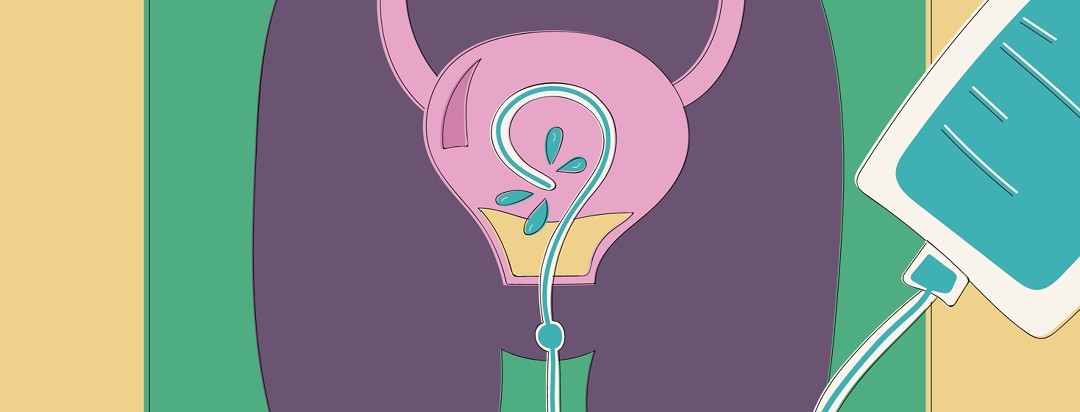The Difference Between Mitomycin and BCG
Occasionally, there is some confusion within the bladder cancer community between two common treatments: Bacillus Calmette-Guerin (BCG) and Mitomycin. They are both intravesical therapies, meaning that they are treatments that are delivered in liquid form directly into the bladder through a catheter, rather than by mouth or through an IV line. The confusion between the two is understandable since the experience of receiving either of these treatments is very similar!
How does intravesical therapy work?
When drugs are directed to the cells that line the inside of the bladder, they can attack the cancer growing there without causing damaging effects to the rest of the body.1 Intravesical therapies are typically recommended for people who have non-muscle invasive bladder cancer or who have an increased risk of disease recurrence after surgery.2
Intravesical therapy is commonly used after a transurethral resection of bladder tumor (TURBT) procedure is done to remove most or all of a bladder tumor. It is generally done quickly, between 6 and 24 hours post-procedure. The objective of quickly following up a TURBT with intravesical therapy is to kill any cancer cells that may remain in the bladder following surgery.1 Cancer cells beyond the bladder lining are not impacted by intravesical therapy.
There are two common treatment approaches used in intravesical therapy, and they each have different benefits and side effects. One uses traditional chemotherapy, and the other uses immunotherapy.
BCG is a type of immunotherapy
Immunotherapy treatment uses a person’s own immune system to attack the cancer cells. It is the most common approach to treat bladder cancer when discovered in the early stages. BCG is a type of immunotherapy that has the effect of activating cells in the immune system to attack cancer cells in the lining of the bladder. BCG only works when it comes in direct contact with tumor cells.1,3
Maintenance therapy
Because bladder cancer is often a recurring condition, maintenance therapy may be recommended for patients with a type of bladder cancer linked to a higher risk of recurrence. It involves long-term periodic BCG treatments after the initial treatments. It is beneficial in reducing the chance that bladder cancer cells will regrow.
Mitomycin is a type of chemotherapy
Mitomycin is the drug most often prescribed for intravesical chemotherapy. Mitomycin is a cytotoxic antibiotic that inhibits DNA synthesis in bladder cancer cells.2 This means that it attacks and kills active cancer cells and impedes their ability to grow and replicate.
It is delivered into the bladder through a soft catheter and can be administered in two ways. One option is to use the drug in the normal way. Another form of the treatment is called electromotive mitomycin therapy, whereby the inside of the bladder is heated.1,4 This treatment approach has been demonstrated to have improved effectiveness.
Intravesical chemotherapy is most often used when intravesical immunotherapy has not been effective. It is rarely used for more than one year.1
Side effects of intravesical therapies
BCG immunotherapy can be more toxic than Mitomycin chemotherapy. Common side effects of BCG include flu-like symptoms, fatigue, fever, chills, or bladder irritation. Recurring use of BCG increases the likelihood of more severe side effects like greater bladder irritation and inflammation and a burning feeling in the bladder and blood in urine.1
Intravesical administration helps to reduce and avoid many of the side effects usually linked to chemotherapy. Additionally, there are fewer maintenance side effects of mitomycin chemotherapy than for BCG. Side effects of mitomycin are irritation, a burning sensation in the bladder, and blood in urine.
Your physician will provide instructions on any special care requirements and advice on how to manage treatment side effects. Intravesical BCG and Mitomycin are contraindicated under certain conditions. Be sure to provide a complete medical history to your medical team before beginning treatment.

Join the conversation